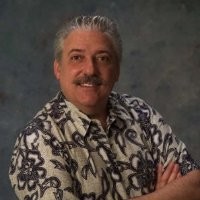Is this the same as the potential energy
associated with a Scalar Field?
“They call it the God particle: a mysterious sub-atomic fragment that permeates the entire universe and explains how everything is the way it is. Nobody has ever seen the God particle; some say it doesn’t exist but, in the ultimate leap of faith, physicists across the world are preparing to build one of the most ambitious and expensive science experiments the world has ever seen to try to find it.” –
David Adam, The Guardian, August 21, 2004
The Large Hadron Collider was started up again this early March weekend and is expected to reach full speed before the end of the month. This massive atom smasher hidden underground in the Alps along the border of France and Switzerland has a price tag of $10 billion and has the job of shooting atoms through its 16.8-mile circular tunnel at insanely high speeds. Thus far, the LHC has accelerated proton beams to an astounding energy level of 2.36 teraelectronvolts (TeV). The highest any previous atom smasher had reached was .98 TeV. In December the CERN scientists shut down the LHC in order to ready it for even more ambitious experiments.
The massive machine was brought back to life in the wee hours of a Sunday morning, and CERN scientists now want the LHC to reach 7.0 TeV in order to create what they consider to be Big Bang conditions. For the next 18 months to two years the LHC should pound atoms against each other and analyze the results through powerful computers in order to catch a glimpse at the very stuff that makes up the universe. Physicists hope the collider will enable them to directly observe the Higgs boson, the theoretical glue that holds the entire universe together. The Higgs boson, often called the God particle, is perhaps the most elusive element in particle physics.
Back in 2008, world renowned physicist Steven Hawking told British TV, “I think it will be much more exciting if we don’t find the Higgs. That will show something is wrong, and we need to think again. I have a bet of $100 that we won’t find the Higgs.” Other physicists, though – a significant number – are hopeful about the possibilities and are willing for Hawking to eventually lose his bet. The project involves more than 8,000 scientists from at least 85 countries.
Dark Matter
The Standard Model in particle physics, which is often compared to the Periodic Table of Elements used by chemists, consists of 16 particles that make up all matter in the universe. The problem is that the Standard Model is not complete. In the late 1960’s a physicist by the name of Peter Higgs proposed the existence of a particle that would somehow interact with every other subatomic particle to give them all mass. Since then, scientists have been scrambling to find this particle.
The existence of dark matter was proposed in 1932 by astronomer Jan Oort, who measured the motions of nearby stars in our Milky Way relative to the galactic plane. He found that the mass of the plane must be more than the mass of the material that can be seen. A year later, Fritz Zwicky examined the dynamics of clusters of galaxies and found their movements similarly perplexing. Over the years, many spiral galaxies were observed and found to be swirling too fast to be held together by the gravitational pull of the visible stars. Since the speedy-moving stars have not been flung out through space, some scientists describe dark matter as “the glue that holds the universe together.”
Astronomers cannot detect or measure dark matter directly because it emits no light or radiation – hence the name. Its existence is inferred from the gravitational effect it has on visible matter (such as stars and galaxies). There have been a number of conjectures regarding the nature of dark matter, but all of them have eluded any empirical validation.
Physicists hope CERN’s Large Hadron Collider will shed even more light on dark matter, dark energy, the existence of extra dimensions, and the fundamental nature of matter, energy, space and time.
Without Excuse:
Science, like religion, often requires us to take a leap of faith. Any honest scientist should admit that despite centuries of scientific discovery and technological advances, most of our universe remains a mystery. There are large numbers of areas that, despite careful investigation, we do not fully understand, from the “magic” of photosynthesis to the mysterious particles that make up the fabric of space-time.
Science continues to develop and change as scientists discover new evidence, and it is one of the great joys of being human to explore and discover the marvelous brilliance and detail God used in putting this world together. But even as scientists analyze the data from the LHC and hope to catch a glimpse of the Higgs boson, we’re certain that the name “God particle” is more accurate than some physicists would choose to admit. Whether or not dark matter is busy keeping distant stars from shooting further into space, we know that Jesus Christ holds each of us, and we trust him to hold the atoms in our bodies together with as much care as he takes in sustaining the entire universe. Even if Science changes, we know He does not.
“Through faith we understand that the worlds were framed by the word of God, so that things which are seen were not made of things which do appear.” – Hebrews 11:3
 A Commentary for Members
A Commentary for Members
From THE BRIDGE Newsletter of OIRF
Published April 2010
© Copyright 2010, Dr. Brian MacCoy, Idaho, USA



